Search Results for Tag: gianna grün
Exploring the North – Sleep surrounded by ice
No matter where you are on the planet, in which country you live and where you’re reading these lines – once a day (at least), we all do the same thing – go to sleep. But some places offer more unusual environments than others to nod off. For instance, how about falling asleep surrounded by ice?
That’s exactly what I tried out at an ice hotel in Sweden. Even the idea of sleeping at about minus five degrees Celsius seems to awake some old evolutionary instincts (at least in people who are lucky enough to normally sleep in a warm bed at room temperatures around 20 degree plus). I actually felt a bit worried that I might not wake up (though the biologist in me knows all too well that if temperatures fall too far, you’ll just lose consciousness while sleeping and won’t even realize when you’re freezing to death). But I kept telling myself that all the other people who stayed here survived and that the polar sleeping bag will be warm enough.
It’s eerily quiet within each room in the hotel made of ice. That might be because of the contrast between sensual temperature feeling that tells me I must be outside, because it is so cold – and my auditive impression to be inside though. The rooms have actually no door, just a curtain and no bright light either. Just a more artistic green-bluish light installation that’s meant to imitate the Northern Lights. It’s an atmosphere that’s calming and oppressive at once.
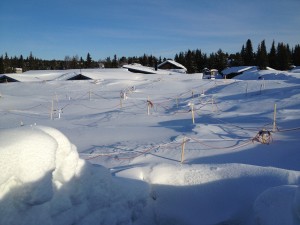
Lying in the room of ice on a bed made of ice (and a fur in between), wrapped up like a caterpillar in the sleeping bag, I’m watching myself falling asleep, meticulously noting the temperature of all body parts. In fact, 95 percent feel warm. The only cold part is the one that is not covered by the sleeping bag – my face. I can pull the bag tight so only my eyes, mouth and nose are uncovered. It feels a bit like an ice cube wandering over my skin, slightly cooling the surface.
Of course if you’re really tired, you can doze off under any circumstances. And while asleep, I sometimes have brilliant ideas like pulling my cap over my eyes and my scarf over the mouth. Even the biologist in me learned a lesson – waking up in the night because the lower sleeping-side is too cold. You actually register that and clumsily crawl onto the other side and fall asleep again as if you were in you own bed at home.
So what’s next?
Is ice as a building material a (literally) cool idea? Find out soon!
Exploring the North – ‘Hunting’ for reindeer
If you’re up in the North, there are some things you just have to do – hunting reindeer for example. But instead of using guns, we’ve been on their tracks with a camera hoping to get a photo.
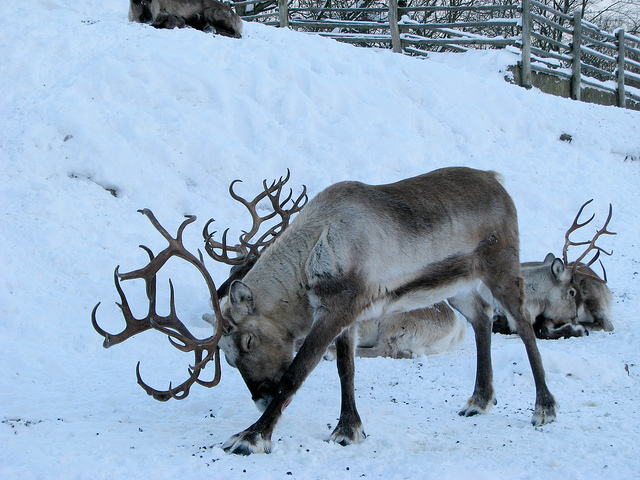
Photo Credit: CC http://www.flickr.com/photos/edumariz/with/5332543363/#photo_5332543363
Reindeer are mostly active during twilight. So the daylight’s almost fading by the time our rented car enters an unimposing little side street out in an industrial area near the harbor of Pitea in Sweden. Here, they don’t clear the roads of the snow anymore, but instead push some of it aside and flatten the rest.
Beside the street, dark green fir trees soar high and you can smell reindeer dung although you can’t see the beasts yet. Patrick Lundgren stands next to his pickup truck. He appears shy at first though that seems at odds with his powerful stature. 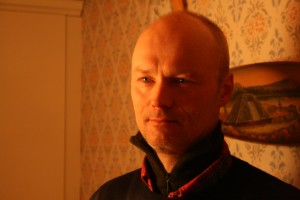 The man from the native Sami people radiates calm (even in unsettling situations as we found out later). He speaks slowly, carefully choosing his words. His attentive eyes rest thoughtfully on the foreigners who want to see “his” reindeer.
The man from the native Sami people radiates calm (even in unsettling situations as we found out later). He speaks slowly, carefully choosing his words. His attentive eyes rest thoughtfully on the foreigners who want to see “his” reindeer.
Sami people have been reindeer herders for generations in the Nordic countries. The animals are only found here today thanks to the Sami who tend to them. The herders take them down from the North to southern regions where they can still find food themselves, if there wasn’t a changing climate.
Patrick takes his shovel from the pickup, trudges through the snow into the forest (while the rest of us struggle not to fall into the snow at every step) and starts digging. One meter of snow has to be displaced until he hits solid ground. The snow cracks a little bit every time his shovel hits the layer. He bends over, reaches into the hole and grabs something. He blows into his hand and holds it out. “This is what they like,” he says and shows us a few lichens and fir needles. 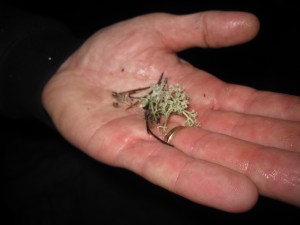
During a normal winter, the reindeer could dig into the ground themselves with their snout. But this winter isn’t normal. Last week it was +10 degrees Celsius – far too warm. The snow started to turn to water. But then temperatures dropped again around minus 11 degrees Celsius again and the melted water froze to ice, forming a rock-solid hard cover which the reindeer cannot penetrate. Patrick then has to provide food in the form of pellets for the about 3,000 animals in the forest – each animal eating about two kilograms. That’s quite expensive though, but it’s the only chance for the reindeer who double up as “climate helpers.”
Finally, we not only got what we came for but we also learned much more. Looking at the people, environment and treasures around the Arctic circle, you realize that they are all connected. So, when my journey is over I hope to give you a broader picture of the Artic circle region, one that shows the links between what’s playing out on the ice and the seemingly disparate stories below the surface.
Exploring the North – an unlikely climate helper
If you think only humans can fight climate change, think again. The Nordic countries are home to an animal that actually helps in minimizing the effects of climate change, Global Ideas reporter Gianna Grün, who’s on a journey to the Arctic Circle, says.
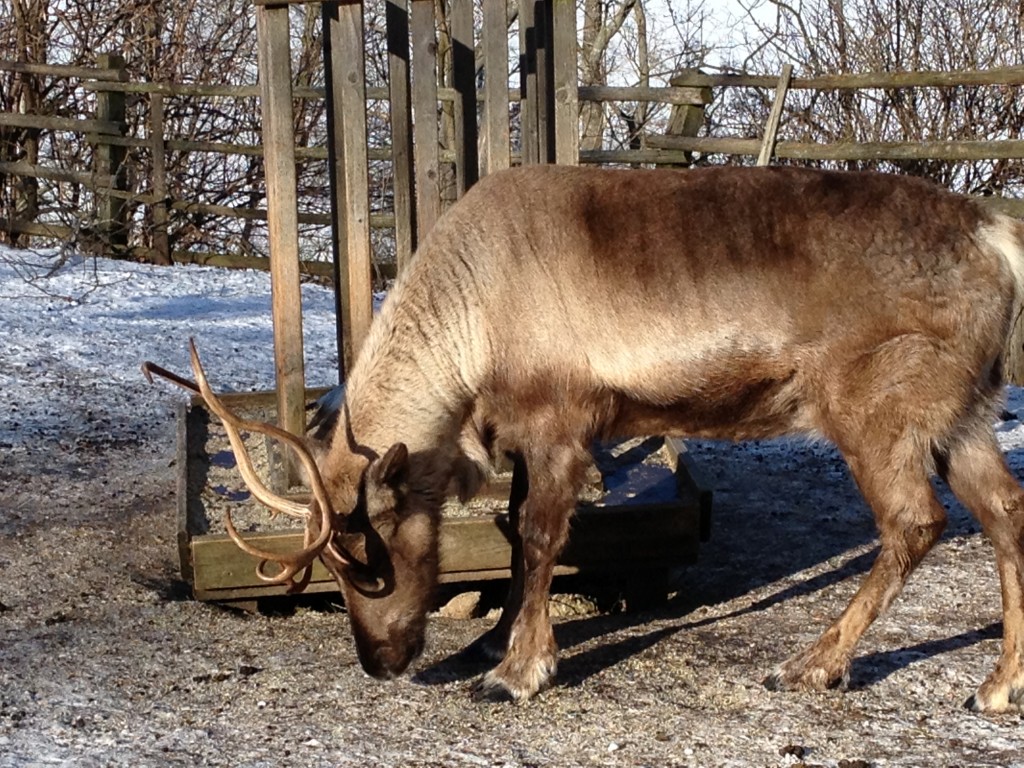
Researchers have found out that whenever there are reindeer around, plants can cope better with rising temperatures.
The reindeer do not do anything special for this effect, but only do what they always do – feed on reindeer moss and leaves. Following their natural rhythm, they thereby impose stability on the whole ecosystem. And stable ecosystems can more easily resist changing climate conditions. Who would have thought Santa’s helper would also pay a role in combating climate change?
So what’s next on my journey to the North?
You will soon meet a man who cares for reindeer herds in Sweden. And you’ll find out what poses the greatest risk to the beasts’ existence. Watch this space!




Feedback